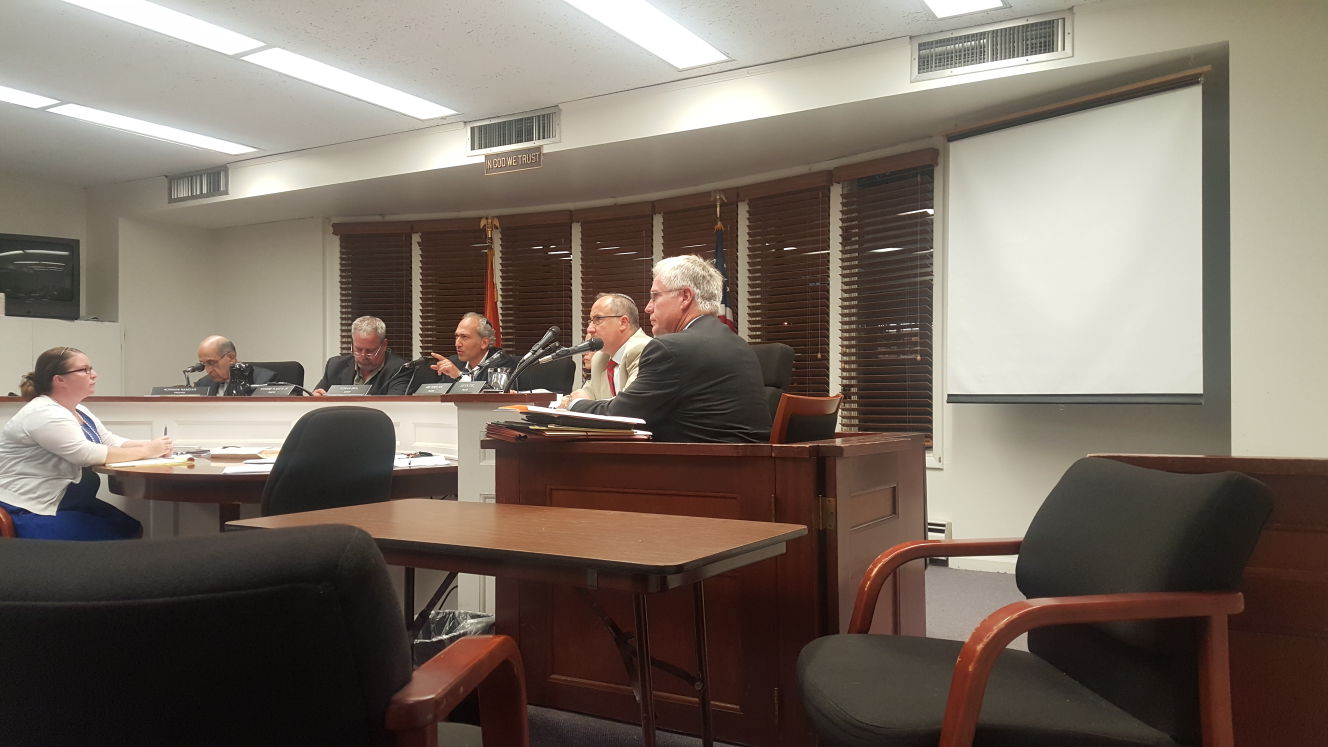Village of Great Neck trustees closed their public hearing on the proposed changes to village tree removal regulations on Tuesday and announced that they would not be changing the law, but instead developing a more effective policy for assessing which trees can be removed.
“The way trees are taken down now will stand as is, but the procedure of going and looking at and determining the type of tree and the issues with the tree will change,” Trustee Raymond Plakstis said. “So it’s not going to affect the law that is written.”
Proposed legislation to amend village laws was presented at a public hearing on Aug. 18 after a tree crashed through the home of Geoffrey and Rachel Epstein on Wooley’s Lane East on July 27 and landed on their 20-year-old daughter, Stephanie. She was treated and later released from North Shore University Hospital in Manhasset.
Rachel Epstein and other residents called for changes to the tree removal law at a board meeting on Aug. 4.
Under current laws, the village’s building department’s authority is limited to taking care of trees that are dead, dying, or in imminent danger of falling, Village Clerk Joe Gill said.
Gill said that with revisions to the local law, the building department would be able to take into account concerns of property owners regarding the potential of very large trees or branches falling onto their homes.
Village of Great Neck Mayor Pedram Bral said under the changes being considered the building inspector will continue to assess the safety of trees, but property owner will have a right to ask a professional licensed arborist for assessment to challenge the building inspector’s determination.
*We will choose three different arborists that are licensed and are working in the Village of Great Neck,” Bral said. “We will give the list of three arborists that the village will have, hopefully, some sort of a contract with a level of the fees that they charge so it will not be exuberant. They will be licensed.”
Bral added that arborists would perform two assessments: a health and a risk assessment.
“The arborist that I spoke to has two levels of inspecting,” Bral said. “One of them is to inspect and assess the health of the tree, the other one is to assess the risk of the tree that can cause damage and what kind of damage it can cause.”
Bral also said that if the arborist does not grant a permit, then the property owner can state their case to the board and they will have the final decision on whether a tree may be removed.
Residents said they were concerned that new legislation would allow property owners to remove trees for reasons other than illness or serious danger.
Bral said that would not be the case.
“The reason that this was suggested by no means meant to go ahead on a rampage and cut the trees as some of the residents wanted to make other people feel it was meant to do,” Bral said. “The reason for this proposal was to try to come up with a protocol to decrease or possibly, even though it is not that possible, to almost eliminate the danger that some of these trees can have and can impose to our houses and to our lives and to our loved ones.”
He suggested that trustees speak with the building department before finalizing a tree removal policy.
“I would advise the council to discuss it with the building department to come up with a recommendation on how to proceed,” Bral said. “We will discuss it with the public.”
The next board meeting is on Monday Sept. 21.



